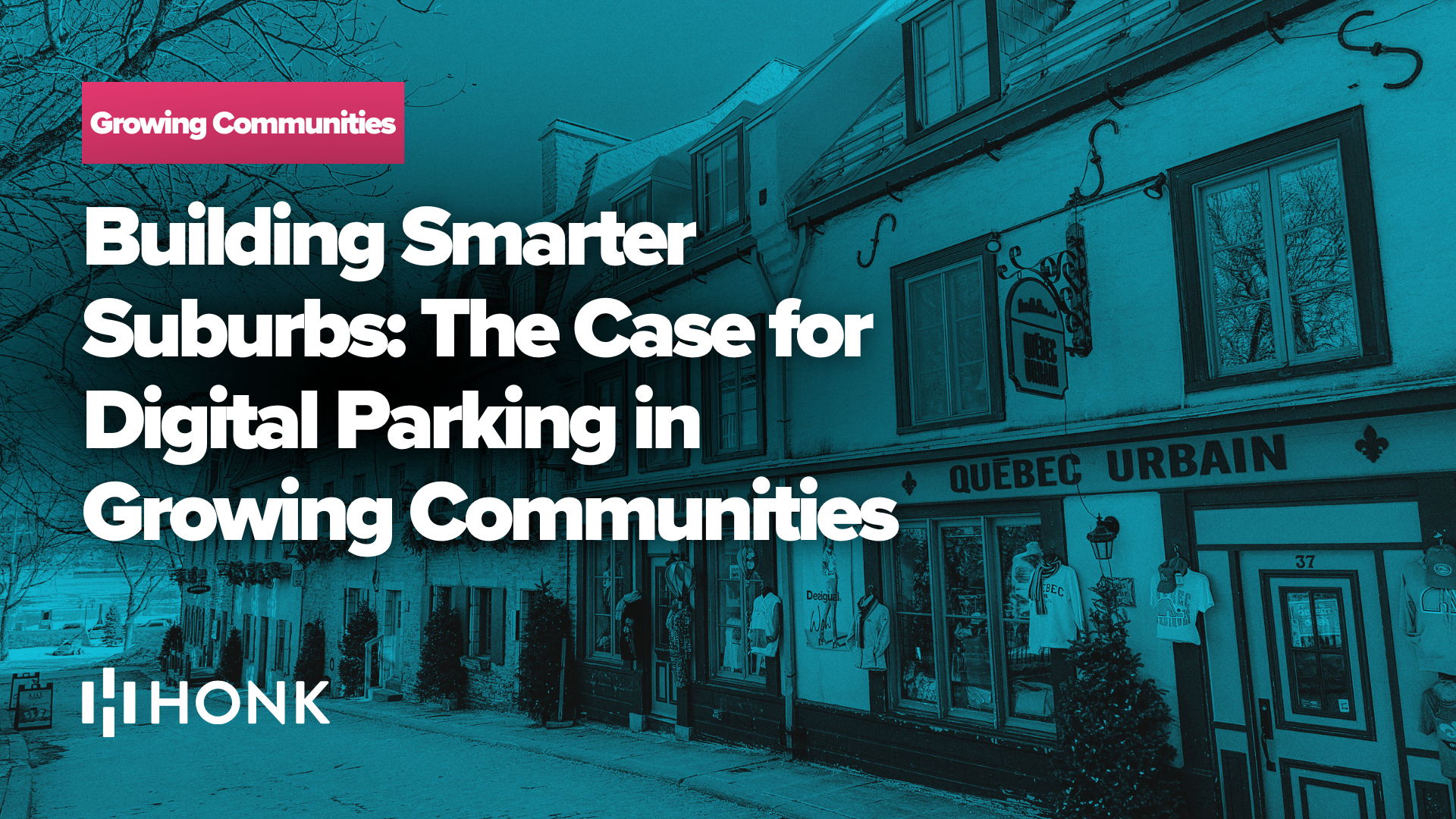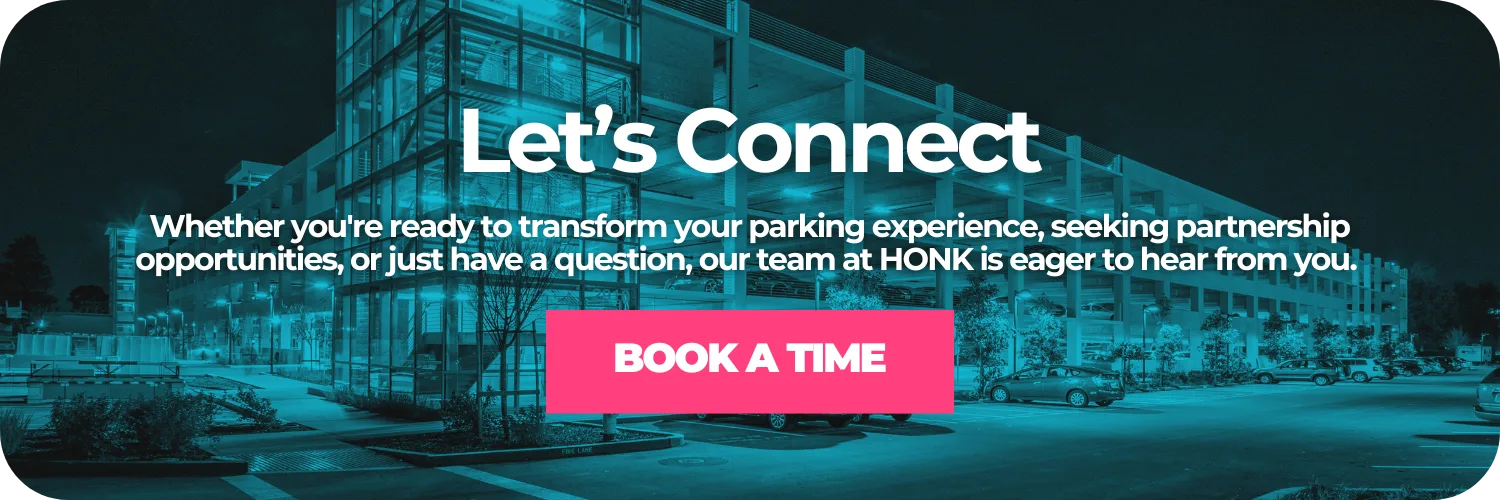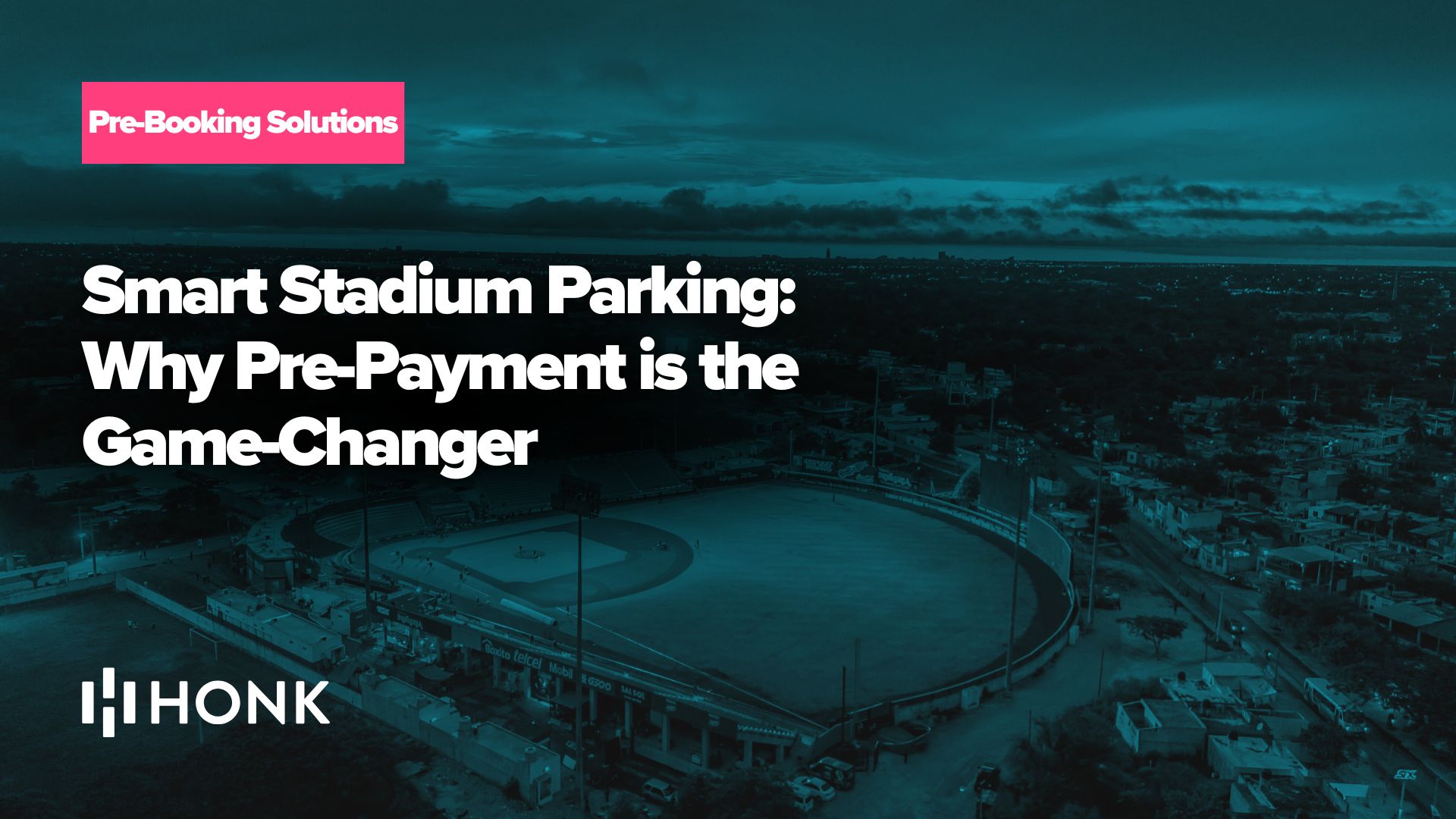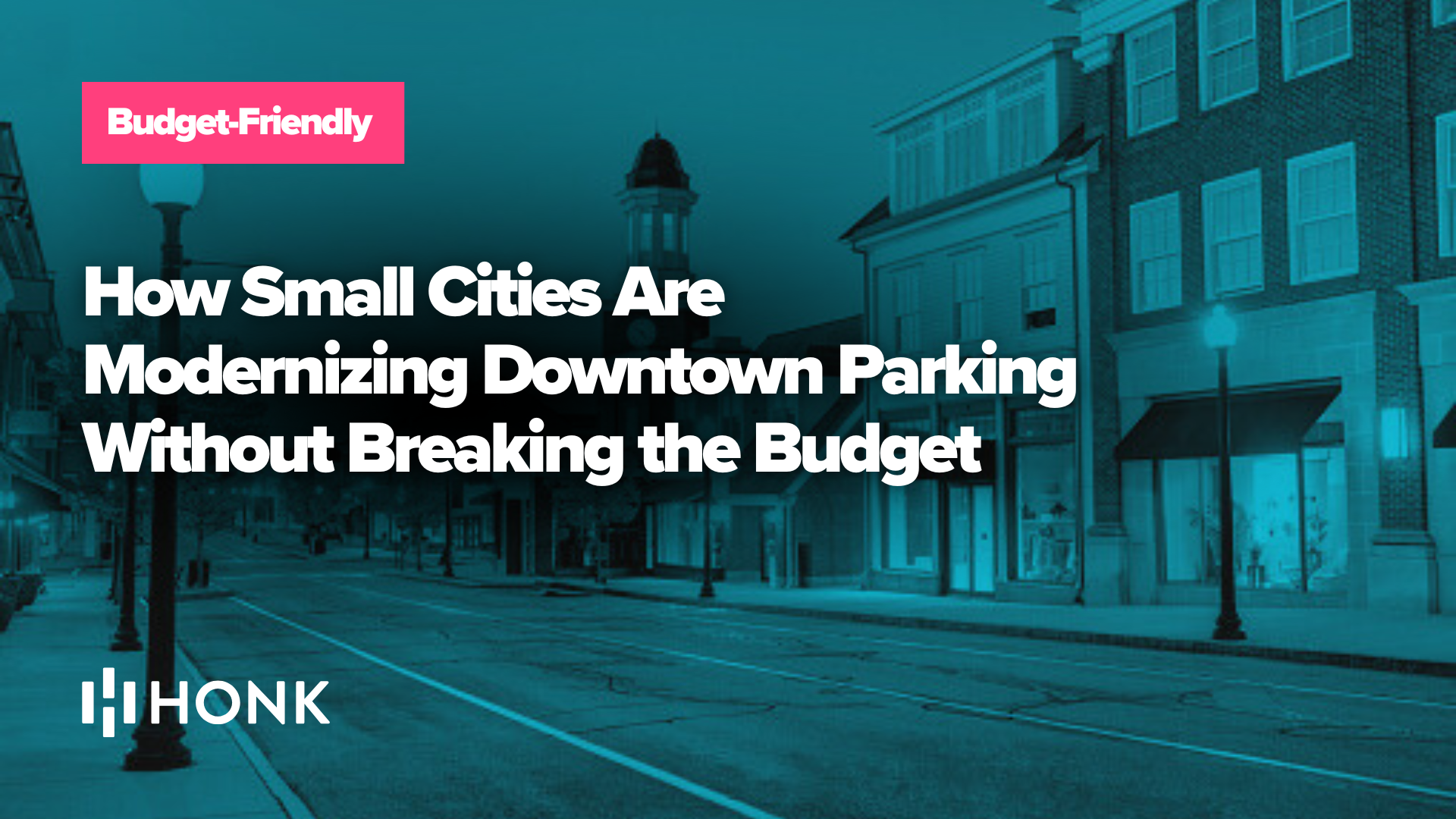As suburban communities expand, they face growing pains common in big cities, including increased traffic and parking challenges. More residents and visitors mean more cars, and once-ample parking spots can’t keep up. Traditional parking methods (coin meters, paper permits, unmanaged lots) fall short in a modern, mobile world. To keep pace, forward-thinking suburbs are adopting digital parking solutions as a cornerstone of their “smart city” transformation. By moving to cloud-based, mobile parking management systems and contactless payments, even small communities can streamline parking operations, increase parking revenue, and elevate the parker experience – all while laying the foundation for smarter suburbs.
The momentum toward smart parking is undeniable. Parking operators who modernize payment systems report a 15–20% increase in daily transactions after going digital, as noted by HONK. Globally, the smart parking market is projected to grow from $8.5 billion in 2023 to $48.3 billion by 2033, fueled by cashless payment systems and parking app integration, according to HONK. Digital parking isn’t just a tech trend for downtown metros; it’s a smart investment for growing communities everywhere. This blog explores how HONK – a leading provider of cloud-based parking software – and similar digital solutions can help suburban operators automate operations, optimize space, reduce costs, and improve satisfaction and the bottom line.
The Parking Challenge in Growing Suburbs
Suburban towns often start with ample parking, historically free or loosely managed. However, as communities grow, parking management becomes a pressing issue. Common pain points include:
- Congested town centers and transit hubs: Busy areas fill up fast. Drivers circling for spaces contribute up to 30% of urban traffic, wasting time and fuel, as highlighted by ParkNYC.
- Inefficient use of parking space: Some lots are underutilized while others overflow due to a lack of real-time data, risking overbuilding new parking instead of optimizing existing assets.
- Outdated payment methods: Coin meters and kiosks are inconvenient. Most drivers (around 80%) prefer digital payment options. This inconvenience leads to poor compliance and lost revenue.
- High operating costs: Manual parking management is costly. Handling physical cash can cost businesses about 9.1% of collected revenue, and nearly half of parking theft incidents involve cash transactions, according to HONKMobile and Access Professionals.
- Lack of oversight and data: Analog systems provide little data on parking usage, making it hard to optimize capacity or plan for future needs. Decisions are often shots in the dark.
For growing suburbs, these challenges signal it’s time for change. Digital parking management offers a path forward, transforming parking from a headache into an asset.
Modern Parking Payments: Contactless and Convenient
One of the most impactful upgrades is moving to contactless, mobile-first parking payments. Today’s consumers expect the same ease when parking as they do for other transactions. With contactless parking technology like mobile apps, QR codes, and NFC tap-to-pay, paying for parking becomes frictionless.
HONK’s platform exemplifies this by allowing drivers to scan a QR code with the HONK app (or via a web link) and instantly pay with a stored credit card, Apple Pay, or Google Pay. This touchless payment process is faster and safer; 46% of consumers prioritized contactless payments during the COVID-19 pandemic, and 74% prefer them for speed and convenience today, as noted by HONKMobile and Access Professionals.
For operators, adopting mobile payments directly improves compliance and revenue by removing payment barriers. More people pay when it’s easy, leading to higher parking occupancy and increased revenue, as highlighted by HONK. Providing diverse, easy payment options also boosts parking customer satisfaction and loyalty, leading to repeat usage, according to HONK. Digital payment systems integrate seamlessly with broader smart city parking management plans, tying into real-time occupancy maps and traffic control.
Streamlining Operations and Reducing Overhead
Digital parking solutions radically improve operations by automating tasks. Moving from manual processes to a cloud-based parking management platform can dramatically impact efficiency.
Traditional cash handling incurs significant overhead; studies show it costs businesses around 9.1% of collected cash in operational overhead. Digital payment processing eliminates these inefficiencies, sending funds directly to the bank with automatic electronic records. This parking management automation yields immediate savings, cutting labor costs by 20–30% for parking operators. One person in a central office can oversee many lots through a unified parking operator platform. Winnipeg’s parking authority, for example, reported significant reductions in collection time after going virtually cashless.
Automation also reduces parking overhead from equipment and maintenance. A digital-first, infrastructure-light approach minimizes the need for costly pay stations or gates. HONK’s scalable approach requires minimal on-site hardware, adapting to growth without proportional cost increases. Fewer machines mean lower maintenance, less power usage, and fewer outages. With digital tools handling routine work, staff can focus on parking space optimization and customer service, improving both efficiency and service quality. This contributes directly to the bottom line by reducing revenue leakage and fraud.
Data-Driven Decision Making for Parking Optimization
Perhaps the most transformative aspect of digital parking systems is the data they generate. A modern parking data management platform provides a rich, real-time picture of how parking assets are used. Every transaction, entry, exit, and citation is recorded for analysis.
With real-time dashboards and parking analytics, operators can observe patterns and respond proactively. Data might reveal underutilized commuter lots, signaling opportunities to open them for weekend shoppers or adjust pricing. It can show downtown street parking is jammed, indicating a need for dynamic pricing or extended time limits. Armed with numbers, operators can implement parking yield management strategies, raising rates during peak demand and offering discounts off-peak to maximize usage. Smart operators leveraging real-time data have increased revenue by up to 20%.
Data also enhances parking capacity management. By analyzing utilization, communities can make informed decisions about adding capacity or optimizing existing space. Data can even allow operators to safely oversell permit parking by 10–20% by understanding that not all permit holders are present at once. This parking space optimization can delay or eliminate costly construction. Parking financial analytics tools break down revenue and usage by various factors, making budgeting and forecasting more accurate. Automated parking reporting and alerts for anomalies further aid in fine-tuning operations.
Advanced Technologies: License Plate Recognition, IoT Sensors, and Integration
Digital parking solutions integrate cutting-edge technologies for enhanced efficiency and user experience. Automatic License Plate Recognition (LPR) uses cameras and AI parking technology to read plates, enabling gateless, ticketless parking. If a driver has paid via mobile or has a digital permit, the system instantly validates their parking.
For operators, LPR is a game-changer for parking access control and enforcement, acting as a virtual gatekeeper. HONK’s system can connect with virtually any third-party parking enforcement software or LPR hardware via open API. Payment data from the HONK mobile app is pushed in real time to the enforcement system, marking vehicles as “paid,” eliminating manual cross-checking. LPR also facilitates fully automated “drive in, drive out” models where the system bills a card on file for the exact duration, ensuring accurate fee collection and improving parking monetization.
Beyond LPR, the Internet of Things (IoT) is making inroads. IoT parking solutions include wireless sensors and smart cameras that monitor space availability, and connected digital signage guiding drivers. In a digital ecosystem, all these pieces can communicate. HONK’s platform can serve as a central hub integrating mobile payments, LPR, gate controls, and sensor inputs.This connected parking technology ensures seamless data sharing, a true parking digital transformation.
Crucially, modern providers prioritize parking software compatibility and offer easy integration plugins to avoid vendor lock-in; 40% of operators cite compatibility as a major challenge when switching technologies. A good tech partner will work with you to incorporate needed features and ensure the customizable parking solution adapts to your environment.
Scalability and Flexibility for Future Growth
A strong argument for going digital in growing suburbs is the scalability of software-based solutions. Investing in a cloud-based parking management platform creates a foundation that easily expands without proportional cost increases. Adding a new lot can be as simple as updating settings and posting signs, with the existing platform handling additional transactions because it lives in the cloud. This scalable parking technology means you can start small and grow, a budget-friendly “pay-as-you-grow” model.
Systems are also highly flexible. A single digital platform can manage multiple parking zones with different rules (e.g., permits at a train station, hourly paid parking downtown with free initial minutes at a park). Operators can tweak rates, hours, and policies through a simple administrative interface without physical changes. This flexible parking system adapts to seasonal events, growth, or policy changes with minimal friction.
Modern providers offer strong support for parking software migration and ongoing updates. By choosing a reliable parking software platform now, you’re future-proofing your parking management for decades, as your suburb evolves.
Better Experiences for Parkers and the Community
Operational improvements ultimately lead to a better experience for everyone. When parking is easy, fast, and fair, drivers, businesses, and the community benefit. By implementing user-friendly parking solutions, suburbs can turn parking from a source of complaints into a competitive advantage.
From the parker’s perspective, a mobile-based system allows drivers to find a lot, pay in seconds, get reminders, and even extend sessions remotely. This peace of mind is invaluable. Drivers don’t need to worry about paper tickets, as their license plate or digital permit acts as their credential. For residents, digital permit programs mean seamless access without physical tags. Today’s parkers increasingly expect these conveniences.
For operators, customer satisfaction jumps significantly; facilities with modern platforms see satisfaction about 30% higher than those with old meters. Happier customers lead to higher parking customer loyalty, benefiting local businesses.
Broader community benefits include reduced traffic congestion and emissions. When drivers quickly find and pay for parking, there’s less idling and circling, significantly lowering vehicle emissions, as noted by ParkNYC. Digital systems also enable initiatives like dynamic pricing to spread demand and prevent congestion. Going digital often means going paperless and needing fewer physical devices, contributing to a more sustainable, smart suburb ethos. When parking operations run smoothly and transparently, it boosts public trust.
A Smart Move for Growing Communities
As suburbs grow, embracing digital parking technology is a key strategy for smart development. It increases revenue, decreases costs, and improves satisfaction. From mobile parking payments to cloud-based management and data insights, the advantages are compelling.
The leap to digital parking has never been easier. Platforms like HONK offer end-to-end, cloud-based tools, with proven reliability and quick returns on investment. You can start small and scale with confidence. With a trusted parking solution provider as your partner, you’ll have support from setup to ongoing optimization.
By digitizing parking, communities signal they are forward-looking and committed to convenience, sustainability, and fiscal responsibility. For operators, it’s an opportunity to maximize parking occupancy and profitability. For drivers and residents, it transforms a stressful chore into a seamless, pleasant part of their day. Suburbs investing in digital parking transformation today will be better prepared for tomorrow’s demands, ensuring efficient, modern, and user-friendly parking as they grow.





